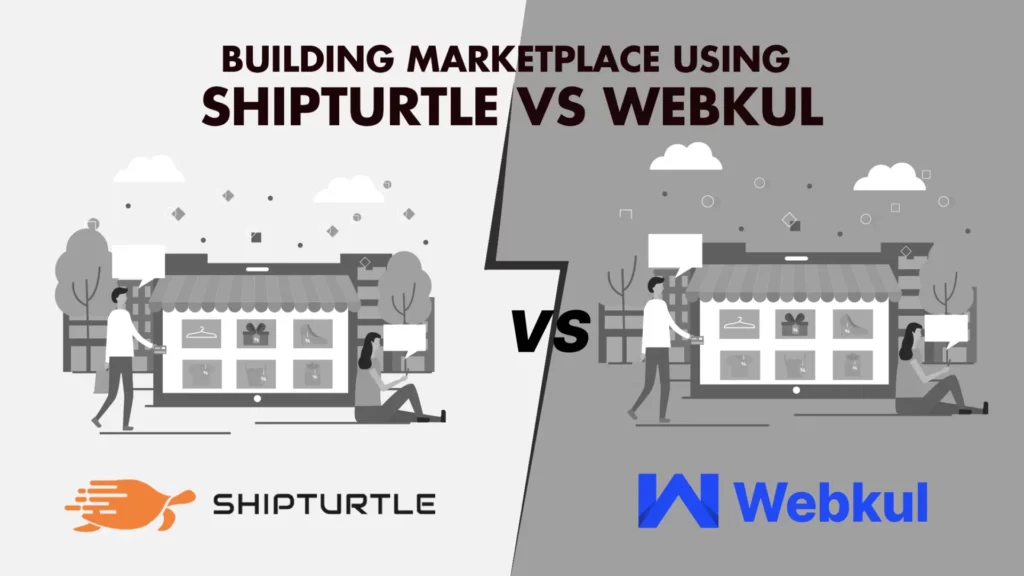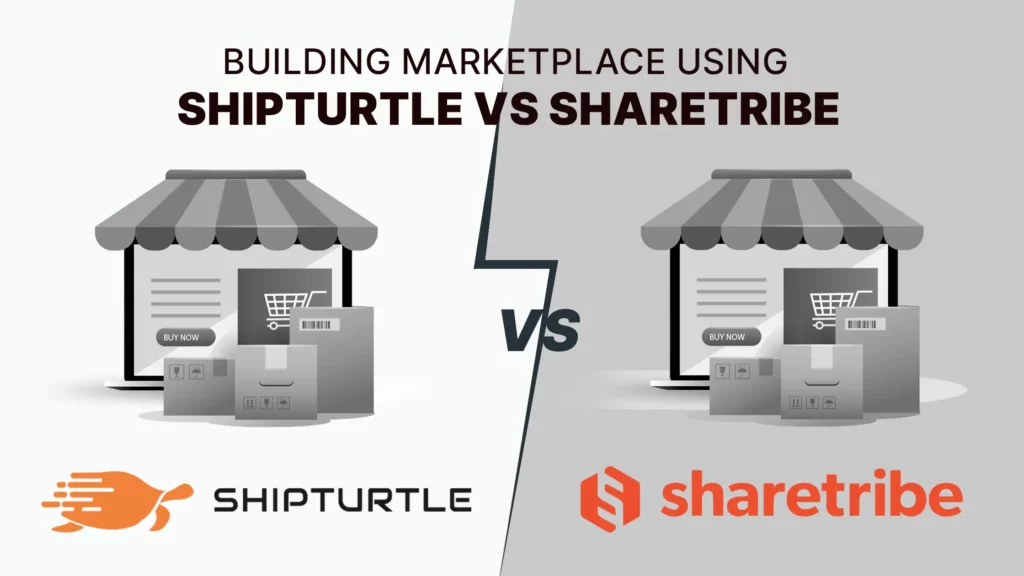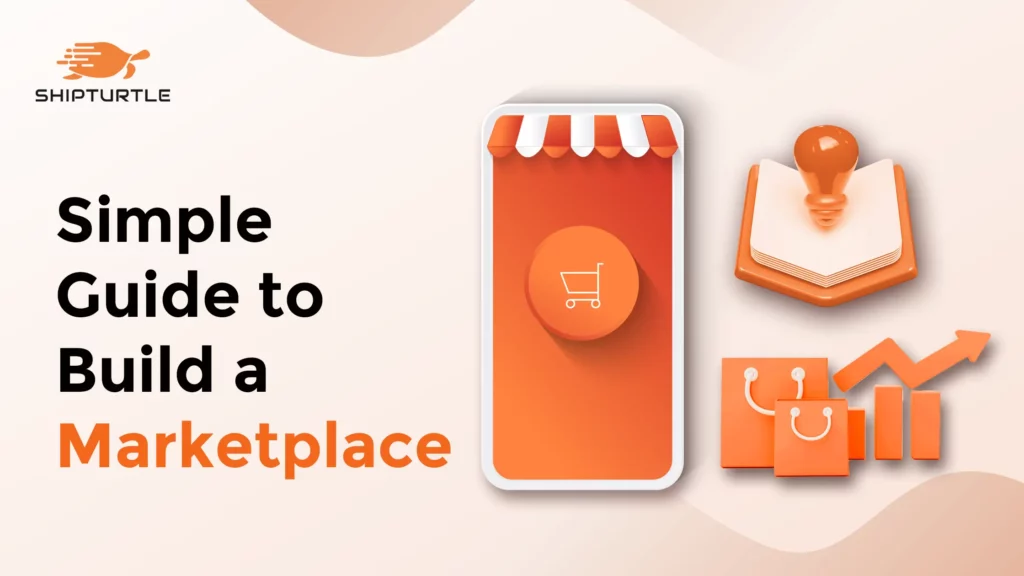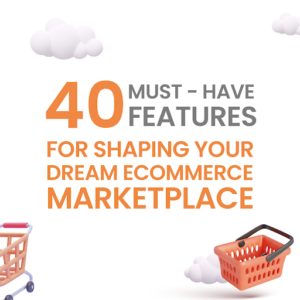The Complete Guide To Build A C2C Marketplace
The e-commerce landscape is far more diverse than the simple buyer-seller dynamic.
Today, technology facilitates more trust-building measures, making way for increased peer-to-peer transactions online.
Building a C2C marketplace online is no longer just a niche – it’s a revolution redefining retail, driven by:
- Affordability: rising acceptance of buying second-hand products
- Entrepreneurship: home-makers are embracing online platforms for monetization
- Growing audience base: more than one-third of the global population will use e-commerce by 2028
But as a marketplace owner, where do you start?
Fortunately, this complete guide is packed with insights on various aspects of a C2C ecommerce marketplace – how different is C2C commerce, the cost of building a C2C site, best C2C marketplace software to use, top examples of C2C companies, and best practices to incorporate.
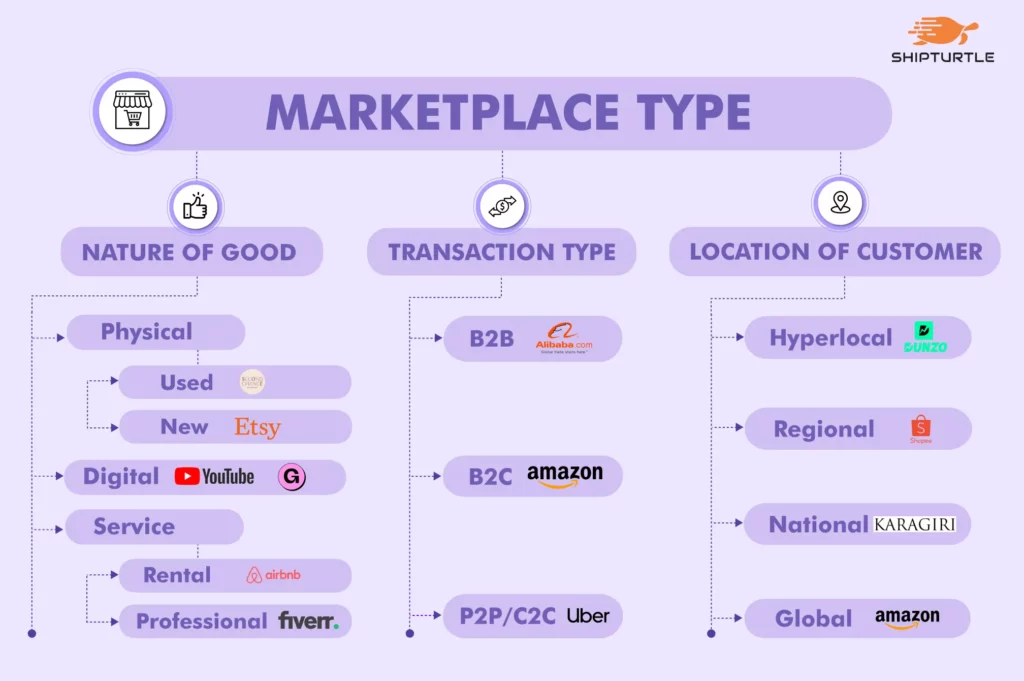
Image: Categorizing Marketplace Types based on Nature of Good, Transaction Type & Customer Location
What is a C2C Marketplace?
A Consumer-to-Consumer marketplace (C2C) is classified based on the type of transactions carried on the ecommerce platform.
Vertical marketplace focuses on serving a niche market where individuals directly buy and sell goods or services from each other, bypassing traditional businesses. For example, Etsy for handmade crafts, Turo for peer-to-peer car rentals, and Fiverr for freelance services.
We also have successful C2C ecommerce types offering a diverse selection of goods like used clothing (e.g., Poshmark), electronics (e.g., Swappa), and even homeware (e.g., Facebook Marketplace). We call them Horizontal marketplace.
Unlike traditional retail models where centralized businesses sell to consumers (B2C) or businesses sell to other businesses (B2B), the C2C platform facilitates decentralized peer-to-peer (P2P) exchange.
| Must-Have Features in a C2C Marketplace For Users: – Simplified Seller Onboarding – Secure and Convenient Transactions – Active Messaging, Forums, and Discussion Groups For Admin: – Automation in Commission Calculations – Payment, Shipping & Logistics Integrations – Listings Moderation, User Authentication and Verification Tools |
C2C or P2P marketplaces host users who typically create profiles, list items or services they want to sell, and set prices or terms. Buyers browse through listings, communicate with sellers, and complete transactions directly on the platform.
Best C2C marketplaces often provide secure payment options, genuine user ratings, and quick dispute resolution mechanisms to facilitate trust and reliability for P2P transactions.
Further, Horizontal marketplace and Vertical marketplace are two distinct categories also associated with C2C:
Horizontal marketplaces: These platforms cater to a broad range of product categories, offering a diverse selection of goods like used clothing (e.g., Poshmark), electronics (e.g., Swappa), and even homeware (e.g., Facebook Marketplace).
Vertical marketplaces: These platforms focus on a specific niche or industry, catering to a more targeted audience with specialized needs and interests. Examples include Etsy for handmade crafts, Turo for peer-to-peer car rentals, and Fiverr for freelance services.
How Different is the Business Model of C2C Platform?
Image: Comparing Seller Workflow in a C2C vs B2B/B2C Marketplace
C2C marketplaces are thriving due to their unique value proposition:
- Customers can be both buyers and sellers at the same time.
- The marketplace often features unique, niche, or one-of-a-kind items that may not be readily available in traditional retail settings.
- Compared to traditional retail, users have better control over the pricing, negotiation, and terms of their transactions.
You can ensure your marketplace platform stands out from the crowd by leveraging some of the following core features:
| Convenience and Security Measures | – Seller Onboarding – Mobile-Friendly Platforms – Payment & Shipping Integration |
| Community Building and Trust Features | – Reviews and Ratings – Forums and Groups – Dispute Resolution – Insurance and Protection Plans – User Verification |
I. Convenience and Security Measures
- Seller Onboarding: C2C platforms onboard any user with fewer to nil business information as a seller. You can create a C2C multi-vendor marketplace that targets everyone, even a home-maker to become a seller.
- Mobile-Friendly Platforms: The type of marketplace you want must be optimized for mobile devices, with intuitive interfaces and features, catering to the increasingly mobile user base.
- Payment & Shipping Integration: Marketplace users want secure and diverse payment options, like digital wallets, escrow services, and credit card processing to make transactions swift and convenient. Further, allow registered sellers to select their preferred shippers and fulfillment partners.
II. Community Building and Trust Features
- Reviews and Ratings: Robust review systems foster trust and inform purchase decisions. Some platforms go beyond traditional star ratings, offering detailed reviews and seller badges for verified users or high-quality products.
- Forums and Groups: The entire operations of the C2C depends on creating spaces for buyer-seller interaction, Q&A sessions, and discussions to build a sense of community and belonging.
- Dispute Resolution: Efficient and transparent dispute resolution mechanisms ensure user protection, build confidence in the platform’s fairness and elevate the overall experience on your C2C.
- Insurance and Protection Plans: Providing optional insurance or protection plans against damage or loss can mitigate risk and attract buyers seeking extra security.
Should You Build C2C Marketplace on Pre-Built Platforms?
There are hardly any platforms to facilitate drag-and-drop C2C marketplace development out-of-box. Even with the most commonly used e-commerce platforms like Shopify or Magento (now Adobe Commerce), you will require a third-party application.
However, such pre-built platforms enable you to launch your marketplace quicker with lower initial cost and ease of use. They offer scalable solutions via third-party applications to accommodate your platform’s future growth and niche requirements.
How to Create a C2C Website on Shopify + ShipTurtle?
Building a marketplace on Shopify associated with C2C features is the most affordable solution, especially for startups or businesses looking to dominate a specific market in a quick time.
Image: Five Steps to Build Your C2C Business on Shopify
Here’s a breakdown of the process:
1. Choose a Plan and Ecommerce Marketplace Apps:
- Shopify Plan: Start with a Shopify plan that accommodates your expected transaction volume and number of sellers. Consider “Advanced Shopify” or “Plus” plans for advanced features like custom store domains and API access.
- Multivendor Marketplace Apps: Utilize apps like Multi Vendor Marketplace like Shipturtle to add core C2C functionalities like seller registration, product listings, reviews, and transaction processing.
Image: Add C2C Functionality as an Add-on for $50 from ShipTurtle Marketplace App
2. Design and Customize Your Store:
- Theme Selection: Choose a theme that fits your C2C marketplace niche and allows for customization. We have curated a list of top Shopify themes for a multi-vendor marketplace. You may check them out here.
- Branding and Design: Make the shop reflect your brand identity through custom logos, colors, fonts, and banner images. With our comprehensive Whitelabeling feature, you can prominently display your brand identity on all user touchpoints.
3. Establishing a C2C Business:
- Seller Registration: Configure how sellers register and manage their profile information and shop settings through dedicated Vendor Dashboards.
- Here is the code snippet for integrating C2C features: <button id=”st-become-a-seller-btn”>Become a Seller</button>
- Copy the provided C2C code snippet in the desired location of your theme editor.
- You can change the text or style of the button as per your requirements, but you shouldn’t change the ID.
Image: “Become a Seller” Added to your Shopify Store
- Product Listings: Establish clear guidelines for product listing requirements, categories, attributes, and images. You may simplify the process through our supreme Vendor Website Sync feature.
- Commissions and Fees: Define commission rates and any additional fees for listing or transactions. Our Commission Automation feature streamlines the transaction fees of any C2C site per your business needs.
4. Enable Secure Payments and Shipping:
- Payment Gateways: Devise escrow systems such that the payment is released to the seller only upon the buyer receiving the goods or services. This improves customer experience on your C2C marketplace. Further, use our Payout Integrations to facilitate easy payouts and invoicing processes.
- Shipping and Fulfillment: Partner with shipping providers and offer different shipping options for sellers and buyers. We offer robust Shipping Integrations with 200+ global shippers.
- Branded Shipping Labels: You can now fully customize the appearance of your shipping label, ensuring that your brand identity takes center stage with our branded shipping label feature.
5. Foster Community and User Engagement:
- Communication Tools: Provide features like messaging and forums for buyers and sellers to interact.
- Reviews and Ratings: Encourage user reviews and ratings to build trust and transparency.
- Promotions and Marketing: Utilize Shopify marketing tools and social media to attract buyers and sellers and make it a profitable C2C.
- Branded Tracking Page: With our unique customer engagement feature, buyers can track the orders through a custom tracking page directly on your website.
How Can Headless Ecommerce Impact Your Marketplace Platform?
Headless development can be a very interesting approach to creating a profitable C2C.
Firstly, Headless development separates the front-end user interface (UI) from the back-end data and logic (API). This means the UI can be built using any technology framework (React, Vue.js, etc.) while the back-end API operates independently, providing data and functionalities through secure connections. For instance, Shopify API uses GraphQL to transfer data seamlessly.
So, whether headless development is the right approach depends on your specific needs and resources:
- If you want a highly customized, scalable, and future-proof platform with unique features, then headless development could be the ideal choice.
- For highly specific C2C markets, headless allows you to build a platform without being constrained by a generic platform’s limitations. It can be in terms of limited options for customization, branding challenges, or potential for higher costs.
Where to Find a C2C Ecommerce Marketplace Development Partner?
You need to decide on the right technology stack for the type of marketplace you want to create from scratch. Simply put, a technology stack is a set of foundational software solutions and tools to run dynamic websites or web applications.
For the sake of clarity, the tech stack is classified into two parts: the server-side (or back-end technology stack) and the client-side (or front-end technology stack).
| Client-side tech stack | HTML and CSS define how the website shall be displayed, while JavaScript allows users to interact with the website. |
| Server-side tech stack | A web development framework like Python builds the website’s logic, the database stores all the data (listings, users, etc.), and a hosting server handles communication with users’ devices. |
| Additional back-end tools | Implement messaging and notification features to facilitate communication between buyers and sellers. Integrate search and filtering functionalities to help users find products or services. Implement security measures to protect user data and transactions. Incorporate analytics and monitoring tools to track user behavior and monitor system health. |
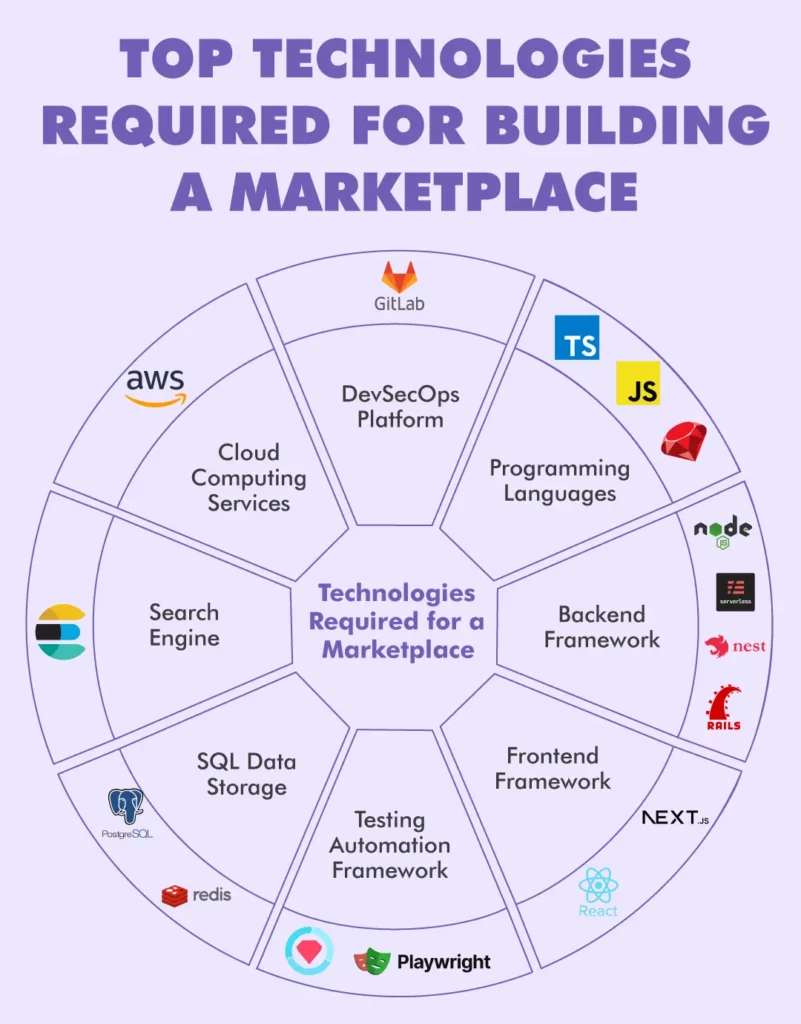
Image: Common Technologies You Would Deal In-house To Build a C2C Website
Investing in developing in-house resources or outsourcing to a reputed full-stack digital agency is a natural way forward to create a perfect C2C marketplace from scratch.
Instead, you can choose to build an online store on Shopify and convert it into a scalable C2C business with Shipturtle’s Shopify integration!
How Much Does it Cost to Build a Platform Like Airbnb OR Uber?
The cost of building a web-based C2C platform that allows consumers to discover and transact directly (without established business intermediaries) can vary significantly, based on:
The expected features in your custom marketplace:
The user feedback and market demand to add certain features like advanced search filters, high-quality listings, reputation systems, or multi-lingual support may add to the overall marketplace cost. Moreover, the current trend for the incorporation of AI tools is on the rise to simplify the user experience.
Operating platforms:
Whether you create a marketplace and intend to open it for all web users or restrict it only to mobile-only platforms can make a huge difference.
Your development approach:
Whether you are combining custom development for core functionalities with pre-built solutions (like Shopify) for specific features, or choosing one approach independent of the other may determine the overall cost.
| Feature | Pre-built Platforms & Plugins | Headless Development |
| Development Cost | Lower upfront cost | Higher upfront cost |
| Cost Range | $10,000 – $50,000 | $50,000 – $200,000+ |
| Development Time | Faster (weeks/months) | Slower (months/years) |
| Security | Platform handles security | Requires custom security implementation |
| Maintenance | Ongoing platform fees | Requires in-house development team |
| Customization | Limited | Highly customizable |
| Suitable for | Simple marketplaces, MVP testing | Complex marketplaces, unique value propositions |
Read this blog for an in-depth analysis of the costs involved in building a marketplace website.
Is Now the Right Time to Start a C2C Marketplace?
| Consumer-to-consumer marketplace can be lucrative because: – Community building: leading to brand loyalty and organic marketing. – Low inventory risk: reducing upfront costs and potential for unsold products. – High-profit margins: commissions without directly dealing with fulfillment. |
The rise of C2C reflects a growing trend towards peer-to-peer exchange and the circular economy.
Marketplace businesses promote sustainability by facilitating the reuse and recycling of items. The resale of pre-owned goods reduces the demand for new production, contributing to a more sustainable and environmentally conscious consumption model.
72% of Gen Z surveyed plan to buy or have already bought secondhand clothing.
The C2C market is also for new goods and services. Etsy, the Brooklyn-based e-commerce company specializing in C2C craft supplies, homemade creations, and vintage items generated 2.6 billion U.S. dollars in 2022.
Moreover, the C2C market is booming with global e-commerce penetration crossing more than 50% of global retail sales by 2025. This makes it a potentially very good time to launch your platform.
What Major Challenges Does a Marketplace Owner Face in the C2C Market?
| 1. Trust and Security | 2. Quality Control |
| 3. Payment Processing and Financial Transactions | 4. Regulatory Compliance and Legal Issues |
| 5. Scalability and Technical Infrastructure | 6. Revenue Model and Monetization |
1. Trust and Security
- Challenge: Users need to trust the platform for transactions, especially in a peer-to-peer environment.
- Strategies: Prioritize user security by implementing secure authentication processes for all listings on the platform. Consider additional verification steps for sellers, such as two-factor authentication, the creation of escrow payment methods, or proactive customer support, to enhance user trust.
2. Quality Control
- Challenge: Ensuring the quality of products or services offered by users is a major concern.
- Strategies: Shipturtle ensures this by having a product approval process
3. Payment Processing and Financial Transactions
- Challenge: Handling payments securely and efficiently, including dealing with different currencies and payment methods.
- Strategies: Integrate reliable payment gateways, offer innovative payment options including escrow accounts, and ensure transparent transactions. processes.
4. Regulatory Compliance and Legal Issues
- Challenge: Navigating the legalities of operating a marketplace, including tax obligations, data privacy, and consumer protection laws.
- Strategies: Consult legal experts, stay updated with regional laws and regulations, and implement compliant processes.
5. Scalability and Technical Infrastructure
- Challenge: Ensuring the marketplace can scale up as user numbers grow, without compromising on performance.
- Strategies: Invest in scalable e-commerce tech stack and cloud infrastructure, conduct regular performance testing, and plan for capacity upgrades.
6. Revenue Model and Monetization
- Challenge: Develop a sustainable revenue model that is fair and acceptable to users.
- Strategies: Experiment with different revenue models (commission, subscription, advertisements, affiliation, rentals), and fine-tune based on user response and market trends.
Top Successful C2C Ecommerce Companies
General C2C Marketplaces:
1. eBay
Image: Homepage – eBay
eBay is one of the pioneers in the C2C marketplace space, connecting buyers and sellers worldwide. It offers a wide range of products, including new and used items, through auction-style or fixed-price listings. More recently, eBay has been expanding into a B2C model.
2. OLX
Image: Homepage – OLX
OLX is a popular online classifieds platform in India, allowing users to post free ads to buy and sell a wide range of products and services. It covers categories such as electronics, vehicles, real estate, and more.
3. Amazon C2C Business Model
Image Credit: Homepage – Amazon Selling
Amazon’s C2C model differs significantly from dedicated C2C marketplace platforms. The inclusion of individual sellers and programs like Amazon Handmade does introduce elements of C2C interactions within its broader marketplace. However, the core functionality of the Amazon marketplace remains rooted in B2C and B2B transactions.
4. Craigslist
Image Credit: Homepage – Craigslist
Craigslist also operates in various regions, providing a marketplace for consumers to connect and post classified advertisements for jobs, housing, goods, and services.
5. Shopee:
Image Credit: Homepage – Shopee
Shopee is a leading e-commerce marketplace platform operating in Southeast Asia and Taiwan. It started as a Shopee C2C marketplace and later evolved into a hybrid marketplace. It offers three seller programs: Shopee Marketplace (C2C), Shopee Mall and Shopee Supermarket (both B2C).
6. Facebook Marketplace:
Image Credit: Homepage – Facebook (Unique for Profiles)
Integrated with the Facebook platform, Marketplace on Facebook allows users to buy and sell items locally. It leverages the social network for user verification and communication.
Fashion and Apparel:
1. Depop
Image Credit: Homepage – Depop
Depop marketplace focuses on the fashion and lifestyle community. It combines social media features with e-commerce, enabling users to discover and buy unique items.
2. Bonanza
Image Credit: Homepage – Bonanza
A hybrid marketplace offering a mix of curated vintage and handmade goods alongside traditional ecommerce items, Bonanza attracts collectors and artisans alike.
Lifestyle:
1. Etsy
Image Credit: Homepage – Etsy
Etsy is a leading online marketplace for handmade, vintage, and unique goods. Sellers can set up their own shops to showcase and sell their handmade creations.
2. ArtFire
Image Credit: Homepage – ArtFire
ArtFire is a marketplace for handmade, vintage, and craft supplies. It provides a platform for artisans to sell their creations directly to buyers.
Real Estate:
1. Zillow
Image Credit: Homepage – Zillow
Zillow is a real estate marketplace that provides information on homes, apartments, and mortgages. It allows users to buy, sell, and rent properties.
2. QuickrHomes
Image Credit: Homepage – QuickrHomes
QuickrHomes is a specialized segment of Quikr focused on real estate. Users can find and list properties for rent or sale, covering residential and commercial spaces.
Automobiles:
1. BikeWale
Image Credit: Homepage – BikeWale
BikeWale is a platform for buying and selling new and used motorcycles. Users can explore a wide range of bikes, compare makes, and models, and connect with sellers for transactions.
2. Spinny
Image Credit: Homepage – Spinny
Spinny is an online marketplace for buying and selling new and used cars. It is unique as it facilitates online auctions for seller’s used cars to local used car dealers or individual customers. This creates a hybrid model involving C2B and C2C transactions.
Local Services and Gig Economy:
1. Sulekha
Image Credit: Homepage – Sulekha
Sulekha is a local service and C2C marketplace where users can find services ranging from home improvement to events and education. It connects service providers with service seekers.
2. Fiverr
Image Credit: Homepage – Fiverr
Fiverr is a global online peer-to-peer service marketplace. It covers a wide range of categories, including graphic design, writing, programming, and more.
10 C2C Marketplace Best Practices
C2C marketplace requires careful planning. It is all typically about balancing user experience with operational efficiency. Here’s a breakdown of best practices to ensure the success of your C2C marketplace (inspirations taken from the above-listed examples):
Front-End (User Experience)
- Advanced Search and Filtering: Granular search options based on product categories, attributes, location, price range, and seller reputation enhance user experience and streamline the search process.
- High-Quality Listings & Content Curation: Encourage sellers with detailed descriptions, high-resolution images, and clear pricing information. Further, Highlight high-quality listings, interesting stories, and community events to showcase the platform’s best aspects.
- Seamless Transaction Flow: Offer a smooth and secure checkout process with trusted payment gateways and efficient order tracking.
- Personalization: Utilize data and purchase history for personalized recommendations and tailor the user experience.
Back-End (Operations and Technology)
- Scalable Infrastructure: Choose a technology stack that can handle the growing user base and transaction volume seamlessly.
- Efficient Matching Engine: Develop a matching algorithm that effectively connects buyers and sellers based on their needs and preferences.
- Automated Workflows: Automate repetitive tasks like listing approvals, notifications, and dispute resolution to improve efficiency.
- Powerful Data Analytics: Track user behavior, transaction data, and market trends to inform platform development and marketing strategies.
Schedule a free consultation call for end-to-end C2C marketplace development.

